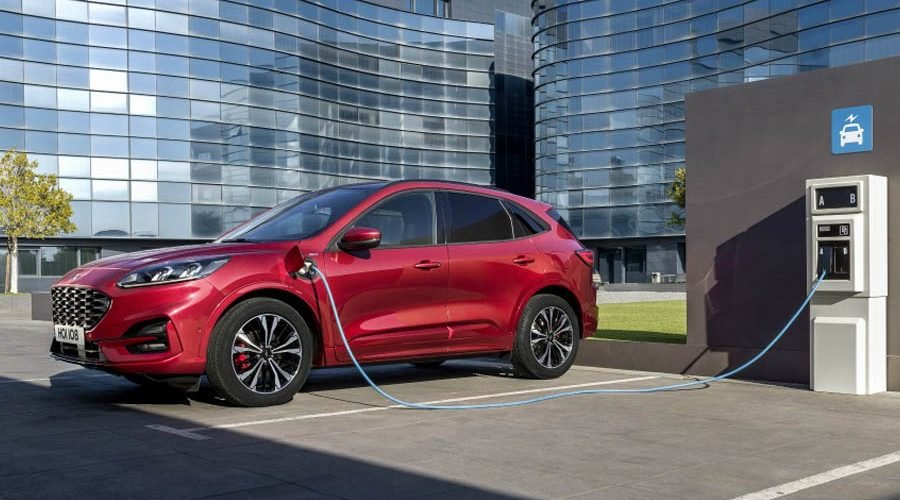The world of cars has been rapidly changing in recent years, offering drivers a range of previously unimaginable options. As technology continues to evolve, so too does the potential for vehicles to become more efficient and capable than ever before.
Plug-in hybrid cars have become increasingly popular among eco-conscious drivers due to their impressive fuel efficiency ratings compared to conventional petrol or diesel-powered cars.
These vehicles contain two power sources: a rechargeable battery that provides propulsion electricity and an internal combustion engine that runs on gasoline or diesel fuel.
This article will answer the question ‘what are plug-in hybrid cars’, explain their benefits and drawbacks, and highlight some popular models available today.
Let’s explore plug-in hybrids!
Table of Contents
What Are Electric Vehicles?
Electric vehicles (EVs) are motorised vehicles that use electric motors and batteries to power their movement. EVs are powered by electricity stored in a battery and charged or generated from an onboard source such as fuel cells, solar panels, or wind turbines.
They offer numerous advantages over traditional internal combustion engine (ICE) vehicles, including lower emissions, energy efficiency and cost savings.
The most common type of EV is the plug-in hybrid car which combines gasoline with a rechargeable battery pack to provide both range and performance benefits.
These cars typically have two sources of power: one for city driving and another for highway cruising. The battery can be recharged through a standard wall outlet or public charging station using renewable energy sources like solar or wind power.
Recharging times vary depending on the vehicle’s battery pack size but generally take four to eight hours when plugged into a 220V outlet.
What Are The Benefits Of Plug-In Hybrid Cars?
Plug-in hybrid cars offer unique benefits, making them an attractive option for many drivers.
These vehicles combine the power of gasoline engines with the efficiency of electric motors to provide fuel economy, reduced emissions and lower running costs.
Additionally, they can be plugged into charging stations or outlets, allowing users to extend their range without relying solely on petrol.
The primary benefit of these cars is improved fuel efficiency. Plug-in hybrids can run in either all-electric or hybrid mode depending on the situation, which allows them to use less petrol than regular combustion engine vehicles. This means fewer trips to the petrol station and more money saved over time.
In addition to increased fuel economy, plug-in hybrid cars generate fewer emissions than traditional automobiles. Their ability to operate on electricity results in fewer pollutants entering the atmosphere, making them an environmentally friendly choice for those who want to reduce their carbon footprint as much as possible.
Due to their excellent fuel economy and environmental friendliness, plug-in hybrid cars are becoming increasingly popular among motorists worldwide looking for a greener way of driving – while still enjoying all the conveniences modern technology offers.
How Do You Charge A Plug-In Hybrid Car?
The most common way to charge a plug-in hybrid vehicle is through an electrical outlet using a wall or portable charger.
Wall chargers typically take four to eight hours, depending on voltage levels and battery size. They are available in many options, allowing for faster charging with higher-voltage chargers.
Portable chargers are ideal for people who may not have access to electricity at home but can find it elsewhere; these devices usually take around six hours for a full charge.
What Type Of Hybrid Cars Can You Get?
Plug-in hybrid cars have become increasingly popular, allowing drivers to go further on a single charge. Plug-in hybrids are available in several different body types, including:
- Sedan
- Hatchback
- Coupe
- SUV
- Sports
Each type of plug-in hybrid car offers its advantages and disadvantages for buyers. Various plug-in hybrid cars are available depending on one’s needs and preferences – ranging from small city-friendly hatchbacks to spacious SUVs capable of hauling large loads safely down the highway.
Are There Grants For Hybrid Cars?
Plug-in hybrid cars are the ultimate eco-friendly transportation, combining a traditional combustion engine with an electric motor and battery system.
For drivers eager to switch to a plug-in hybrid car but struggling with affordability, some financial help may be available through grants. Governments regularly offer grants to help people afford electric vehicles and at-home chargers to help reduce nationwide carbon emissions.
The good news is that even if specific grants aren’t available at this time, many automakers now offer discounts on select models along with special financing options designed to make going green more affordable than ever before –– making it easier than ever for drivers everywhere to join the revolution towards sustainable transport solutions.
Will A Hybrid Car Save You Money?
Plug-in hybrid cars are becoming increasingly popular due to their fuel and cost savings potential.
How much money you will be able to save depends on several factors, including driving habits and the price of petrol in your area. Generally speaking, hybrids offer better miles per gallon than regular cars, meaning they use less fuel over time.
This can lead to significant long-term savings when compared to using gasoline alone. Additionally, many governments have incentives for those purchasing hybrid cars, which can further decrease the costs of purchasing a new vehicle.
In Conclusion,
In conclusion, plug-in hybrids are attractive, combining convenience and cost savings over time. We hope this guide has helped answer the question of ‘what are plug-in hybrid cars’ and given you the information you need to decide if a hybrid is a right choice for you.





